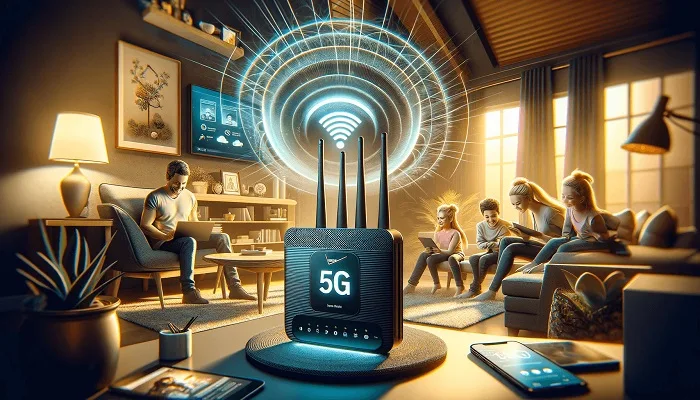The Evolution and Future of 5G Internet Technology

As the digital world evolves, 5G internet technology emerges as a cornerstone of modern connectivity, promising to redefine our digital experiences. But what exactly is 5G, and how does it stand to change the landscape of internet technology? This article delves into the intricacies of 5G technology, exploring its foundations, functionality, and potential to transform our digital future.
What Kind of Technology is 5G and When Did It Appear
5G technology, the fifth generation of mobile networks, marks a significant leap from its predecessor, 4G. It was first deployed in 2019, aiming to provide faster speeds, lower latency, and more reliable connections. Unlike 4G networks that focused on mobile internet, 5G extends its capabilities to the Internet of Things (IoT), supporting a vast network of devices with high-speed internet.
At its core, 5G technology is designed to accommodate the ever-growing demand for data and connectivity in the digital era. It utilizes advanced technologies such as millimeter waves, small cells, and massive MIMO (Multiple Input Multiple Output) to achieve unprecedented speeds and capacity. The deployment of 5G networks around the globe represents a transformative step towards a fully connected, digital world.
How It Works and What It Is Based On
5G networks operate on three distinct spectrum bands, each serving different purposes. The low band spectrum offers wide coverage and deep penetration but at relatively lower speeds. The mid-band spectrum strikes a balance, offering higher speeds and reasonable coverage. The high band spectrum, or millimeter waves, provides ultra-fast speeds and low latency but has limited range and penetration.
The backbone of 5G technology is its advanced network architecture. It leverages network slicing to create multiple virtual networks, allowing for more efficient use of the infrastructure. This enables the customization of networks to meet specific needs, such as enhanced mobile broadband (eMBB) for consumers or ultra-reliable low-latency communications (URLLC) for critical applications like autonomous driving and telemedicine.
Furthermore, 5G introduces edge computing, which processes data closer to the user, significantly reducing latency. This is essential for applications requiring real-time responses, such as virtual reality (VR), augmented reality (AR), and gaming. The combination of these technologies makes 5G a versatile and powerful platform for a myriad of applications.
How It Differs from 4G
The transition from 4G to 5G is not merely an upgrade in speed; it represents a fundamental shift in how networks operate. 5G’s low latency and high capacity enable it to support a wider range of applications, from IoT devices to autonomous vehicles. Its network slicing capability allows for the creation of tailored networks, providing the flexibility to meet diverse requirements.
Moreover, 5G’s use of millimeter waves is a departure from the frequencies used by 4G, allowing for faster data transmission but requiring a denser network of antennas. This shift necessitates significant infrastructure changes but promises to deliver a more efficient and faster network.
The introduction of edge computing with 5G further distinguishes it from 4G, enabling data processing to occur closer to the point of use, thus reducing latency. This is critical for applications requiring instantaneous response times, setting 5G apart from its predecessors in terms of capabilities and potential applications.

What Is Its Real Potential
5G technology harbors the potential to revolutionize industries by enabling smart cities, telemedicine, and IoT on an unprecedented scale. Its high speed and low latency could transform urban landscapes into smart cities where everything from traffic lights to utility services is interconnected and optimized for efficiency.
In healthcare, 5G could facilitate remote surgeries and patient monitoring, making healthcare more accessible and efficient. The automotive industry could also see a revolution with the advent of 5G, as it enables autonomous vehicles to communicate with each other and with city infrastructure in real-time, significantly improving safety and efficiency on the roads.
Weitere Entwicklung
Die zukünftige Entwicklung der 5G-Technologie konzentriert sich auf die Erreichung einer flächendeckenden Abdeckung und die Integration mit neuen Technologien wie 6G, künstlicher Intelligenz und Blockchain. Diese Fortschritte zielen darauf ab, die Fähigkeiten von 5G weiter zu verbessern und es noch stärker in unser digitales Leben zu integrieren.
Da sich 5G-Netzwerke weiterentwickeln, werden sie immer besser in der Lage sein, virtuelle und erweiterte Realitäten zu unterstützen und immersive Erlebnisse zu ermöglichen, die bisher nicht möglich waren. Darüber hinaus verspricht die Integration von 5G mit KI- und Blockchain-Technologien eine Verbesserung der Sicherheit, des Datenschutzes und der Effizienz und ebnet den Weg für innovative Anwendungen, die jeden Aspekt unserer Gesellschaft verändern könnten.
